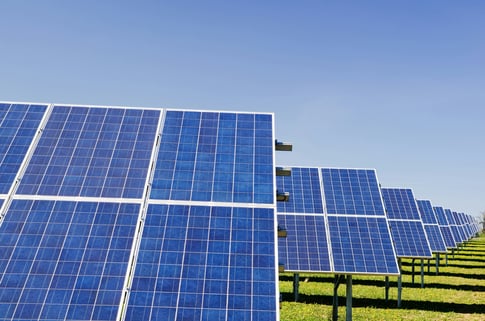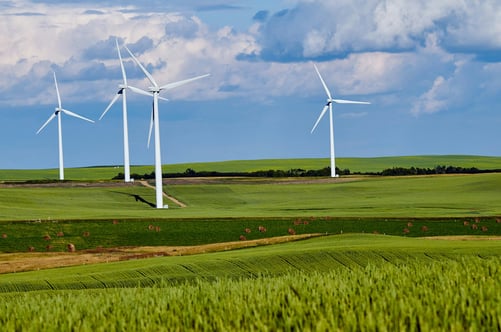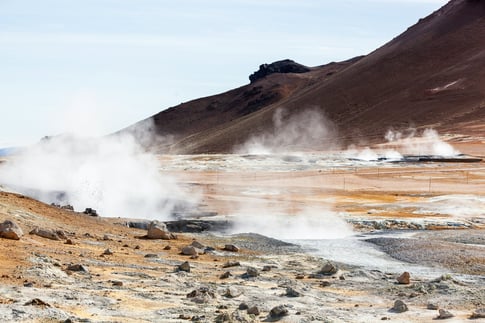The Urgency of Developing Green Fuel
The development and implementation of green energy is one of the most pressing concerns we have as a global civilisation...
Read full blogGreen energy is growing faster than ever. As we become increasingly aware of the impact fossil fuels are having on the environment, eco-conscious consumers are shifting to renewable energy, savvy businesses are changing their energy policies, and engineers are learning to work with solar, wind, and hydroelectric systems.
According to the international energy agency, renewable energy is set to grow 50% by 2024, an increase of roughly the entire energy capacity of North America. This energy surge will be led mostly by solar energy, which will be around 35% cheaper by that time.
VHR’s Energy & Renewables specialists investigate the future of green energy.
The simplest reason green energy is growing is because it’s rapidly becoming more viable than traditional fossil fuels. Over the last two decades, green energy has grown cheaper, more efficient, and more important for businesses to adopt.
It’s now cheaper to operate on solar and wind power than gas, and given recent issues with supply around the world, renewable energy is looking increasingly attractive.
The cost of installing and maintaining solar cells has fallen by 90% since 2009, and the cost of solar power is predicted to drop by anywhere from 15-35% by 2024, whereas Carbon Tracker predicts that 72% of all coal-based power will be unprofitable by 2040. Running on fossil fuels soon won’t make good business sense, and renewable energy will only continue to fall in price.
Solar and wind power are becoming more efficient each year, in part due to better technology when generating energy, but also thanks to more sophisticated methods of moving and storing it.
Distributed generation is a technique that allows for excess power generated from solar panels on private homes to be sold on and transferred to other sites. The main benefit of this is a reduced reliance on centralised power sources, meaning power-cuts are less likely.
Transmission of power has been a problem for renewable energy in the past, as it is often generated in remote areas, such as offshore wind farms. Being able to transfer energy across long distances will be vital in the mass adoption of renewable energy, and so is an area of huge interest to the industry.
There has been rapid growth in distributed generation in recent years, and this is expected to continue: the distributed generation market could be worth EUR 147.5 billion by 2026. Over three quarters of the power and utility respondents to a recent Deloitte survey said that they are either planning or depending on new transmission projects to increase access to renewable energy.
Energy storage has also improved. Green energy like solar or wind can’t be generated continuously, so efficient storage is a crucial element of any renewable energy system. Furthermore, when energy is stored or transferred, it can be lost, so any improvement in storage can potentially save vast amounts of energy and money.
Consumers and investors alike are demanding more widespread green energy use.
As the public grows more concerned about climate change, businesses that are quick to adopt green energy will reap the rewards, whereas those that lag behind may find themselves under scrutiny, criticism, or even risk a boycott.
Industry giants like Google, Amazon, and Apple are investing millions into green energy, so it’s likely we’ll see others follow suit.
Solar is the fastest growing type of green energy because it’s more reliable and predictable than wind power. Thanks to increased performance and smarter energy storage, commercial buildings running on solar power will still run at full capacity even when not in full sunlight.
Austria, Belgium, the Netherlands, and Australia are all predicted to have some of the highest growth of solar energy per capita over the next few years, but China will likely have the highest amount of overall growth. But even with current growth levels, only 6% of the world’s viable rooftops will have solar panels by 2024, so we will need significantly more investment to hit global renewable energy targets moving forwards.
As of this year, solar installers and developers will have to monitor their compliance with the Solar Energy Industry Association’s Solar Supply Chain Traceability Protocol. These guidelines are designed to enable designers, suppliers, and customers to trace the materials back through the supply chain, and to ensure ethical labour throughout construction.

Onshore wind energy capacity will increase by around 57% by 2024, being driven in part by major investment in the US, a country with vast amounts of open land, perfect for wind power.
Offshore wind energy will also increase, with Japan being a particularly big investor, seeking to replace old nuclear reactors with cleaner, safer wind turbines.
The way we build offshore wind farms is also changing. While traditional offshore wind turbines are built on metal or concrete towers, new turbines are being built to float, having less impact on the environment and marine life around them.
There are also practical benefits for power generation, as this allows wind turbines to be stationed further out to sea, where winds tend to be stronger, creating more energy.

Geothermal energy is created when water is pumped from underground at high pressure, then turned into steam, which turns a turbine connected to a generator.
The market for geothermal heat pumps will exceed $2 billion in the US alone by 2024. As building codes are updated to require renewable energy, geothermal is slated to be one of the go-to methods of generating the necessary power across the country.
The global geothermal market will increase by 28% by 2024, with Asia driving roughly one-third of that expansion.
While these methods of generating energy are growing around the world, they’re supported and improved by other technologies, like artificial intelligence.

Both wind and solar power rely on ideal weather conditions for peak efficiency. Unfortunately, even today this can be hard to predict, with weather patterns changing faster than ever.
Artificial intelligence can take in and analyse more weather information more effectively than a team of meteorologists, and machine learning allows AI systems to gather past data on whether to make more accurate predictions about what will happen in the future.
Artificial intelligence can play a big role in grid management, helping to ease the burden when power needs are high by predicting energy usage in households. If it looks like power needs will be exceptionally high, generation can be increased, or reserves accessed and utilised. If power needs will be low, they can lower generation to avoid waste.
Maintenance on a power grid can be difficult for a number of reasons, including sourcing the necessary parts, knowing when maintenance is required, and maintaining consistent power.
AI can accurately predict when parts will fail, allowing for quick and simple replacements before problems occur. This allows notice to be given to local populations in advance of repairs, which can then be scheduled to take place at the least inconvenient time.
While green energy is good for the planet, the waste generated by renewable energy infrastructure at the end of its lifespan is not. Early green energy installations are beginning to reach the end of their lifecycle, now obsolete when compared to modern, more efficient technologies. By 2030, there may be up to 1 million tonnes of waste from renewable energy installations.
However, through upgrades, it may be possible to salvage older models, and extend their usefulness into the next generation of renewable energy.
Renewable energy will only grow over the coming years, and there are ample opportunities for companies, governments, and engineers to get involved and help the adoption of green technology around the world.
Read about the renewable energy market in the UK, or read 5 reasons to work in renewable energy.
The development and implementation of green energy is one of the most pressing concerns we have as a global civilisation...
Read full blogWe have been in an energy crisis for some time, and if things don’t change, situations like this may become more and mor...
Read full blogAerospace & Aviation F1 & Automotive Marine Energy & Renewables Civils & Infrastructure Engineering & Manufacturing Science & Technology
The skills shortage is one of the biggest issues facing the technical sector today. Across different industries, whether...
Read full blog
Nicosia, Cyprus
© VHR 2020 | All Rights Reserved